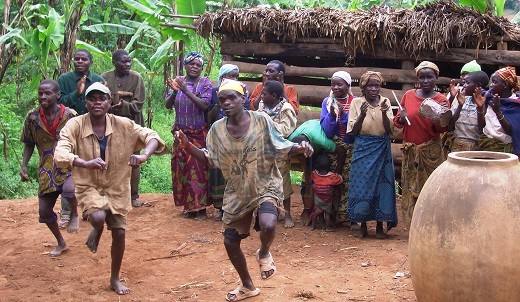Road Trip at Mgahinga Gorilla National Park: Local’s Guide for Foodies
A Journey Beyond the Gorillas
When the name Mgahinga Gorilla National Park is mentioned, what often comes to mind is the enchanting experience of trekking through lush bamboo forests in search of the elusive mountain gorillas. Yet, beyond the misty trails and the thundering silence of the Virunga Volcanoes, lies another treasure waiting to be uncovered—the culinary secrets of southwestern Uganda. A road trip to Mgahinga is not just an expedition into wilderness; it is also an immersion into the heartbeat of local flavors, traditions, and cultural delights that elevate the journey from a safari to a soul-deep exploration.
For the curious foodie traveler, the route to Mgahinga opens up a tapestry of roadside flavors, bustling local markets, and indigenous recipes that tell stories of heritage. This guide takes you on a structured and flavorful journey, allowing you to experience Mgahinga with not just your eyes and ears, but with your taste buds and heart.
The Road to Mgahinga: Scenery and Stops Along the Way
The road trip begins in Kampala or Entebbe, winding through a changing landscape that introduces travelers to Uganda’s diversity. The route spans several regions, each distinct in its culinary identity. As the journey advances toward the southwestern highlands, the air grows cooler, the rolling hills greener, and the cuisine heartier.
Local eateries, known as “kafundas,” line the highways, serving freshly roasted gonja (plantain), hot chapatis, and steaming cups of spiced African tea. In towns like Mbarara, the heartland of Uganda’s famous Ankole cattle, one is introduced to fresh dairy products—rich milk, creamy yogurt, and ghee that carry the pride of pastoral traditions. This leg of the journey is more than a drive; it is a slow unveiling of Uganda’s culinary landscape, where every stop tells a story of the land.
Culinary Discoveries Before the Park
Before reaching Mgahinga, most road trips make a stop in Kisoro town, a vibrant outpost nestled in the shadows of the Virunga ranges. It is here that the flavors of southwestern Uganda fully announce themselves. The markets bustle with vendors offering Irish potatoes, avocados larger than one’s hand, fresh beans, and local honey. Kisoro’s altitude and volcanic soils gift the area with some of the richest harvests in the country, making it a food lover’s dream.
Dishes like eshabwe, a ghee-based sauce traditionally prepared by the Banyankole, and millet bread served alongside local vegetables, are culinary gems that connect food with heritage. Travelers often find themselves drawn into small homesteads or community eateries where meals are shared communally, and food is not merely sustenance but an expression of identity.
The Taste of the Highlands: Food Inside Mgahinga
Within Mgahinga Gorilla National Park itself, the food experience takes on a distinctive highland character. Most lodges and camps in the area serve a blend of Ugandan traditional dishes with a touch of international influence, catering both to adventurous foodies and those with more familiar palates.
Local staples like matoke (steamed green bananas) are often served with hearty stews, while freshly grown vegetables and legumes dominate the menus. Roasted Irish potatoes, often prepared over wood fires, are a true highlight. For those seeking an authentic experience, the opportunity to sample Ugandan coffee—grown on the volcanic slopes and brewed strong and aromatic—is not to be missed.
Community-run tourism initiatives also offer visitors the chance to dine with local families. Meals prepared from locally grown produce bring one closer to the essence of Batwa and Bakiga cultures, where food is a communal act and recipes are oral traditions passed down through generations. The flavors here are not luxurious in a conventional sense, but they are rich in authenticity, rooted in the soils of the park’s highlands.
Flavors of the Batwa: A Cultural Culinary Connection
A road trip to Mgahinga cannot be complete without delving into the Batwa cultural experience. The Batwa, once forest dwellers of the Virungas, share a unique gastronomic heritage that is rarely found elsewhere. While much of their traditional lifestyle has been reshaped, elements of their food culture survive through storytelling and demonstrations offered to visitors.
Wild honey, forest fruits, and medicinal herbs form part of the Batwa culinary identity. Participating in their demonstrations allows travelers not only to taste but also to understand the deep relationship between people and forest. Here, food is inseparable from survival, spirituality, and respect for nature. To a visiting foodie, such an encounter is more than a tasting session; it is an awakening to the philosophy that food is memory and survival entwined.
The Market Experience: Foodie Heaven in Kisoro
Returning to Kisoro after exploring the park, the open-air markets demand attention. These are not simply places of trade but vibrant theaters where the life of the community plays out. For a foodie, this is the heartbeat of local cuisine.
Stalls overflow with bananas of every variety—sweet, cooking, and brewing types used for making the local banana beer. Heaps of beans in multiple colors and textures line the stalls, alongside cassava, yams, and groundnuts. Spice vendors fill the air with the aroma of cardamom, cloves, and ginger. To wander through Kisoro market is to step into a living cookbook where ingredients, methods, and cultural practices converge. Travelers often discover that the joy is not only in buying but in conversing with vendors who share recipes, tips, and sometimes even impromptu tastings.
Beyond the Plate: Roadside Culture and Hospitality
While the dishes themselves are a delight, the essence of a food-focused road trip at Mgahinga lies in the hospitality of the people. In Uganda, food is the first language of welcome. Strangers are invited to share meals, and generosity is extended through plates piled high with local staples. Along the road, locals roast maize, brew fresh coffee, and press sugarcane juice, offering travelers both refreshment and warmth.
This hospitality turns the journey into a cultural exchange where food is both the medium and the message. Every cup of tea sipped at a roadside inn, every plate of beans and matoke shared in a family kitchen, becomes a memory stitched into the broader adventure of exploring Mgahinga.
Best Time for a Foodie Road Trip
Though Mgahinga is an all-year destination, the best time for a food-centered road trip is often tied to harvest seasons. From June to August and December to February, markets burst with fresh produce, and the culinary landscape is at its most vibrant. The dry seasons also make road conditions more favorable, ensuring that travelers can comfortably combine food experiences with gorilla trekking, golden monkey tracking, or hiking the Virunga volcanoes.
During these months, culinary festivals and cultural gatherings are common in the surrounding communities, allowing visitors to combine safari with authentic cultural immersion.
Where Food Meets Adventure
A road trip to Mgahinga Gorilla National Park is much more than a passage into wilderness. It is an exploration where food and culture intertwine, where the smoky flavor of roasted plantain lingers as long as the memory of gorilla encounters, and where the rhythm of roadside markets resonates as deeply as the footsteps on volcanic trails. For the food lover, Mgahinga becomes not just a safari destination but a gastronomic pilgrimage into the highlands of Uganda.
To savor the road, the culture, and the wilderness in one seamless journey, travelers are encouraged to plan with a trusted expert. For carefully curated experiences that blend adventure with culinary discoveries, book your African tours and safaris with WildHorn Africa, and allow every meal and mile to become part of your story.




 WildHorn Africa – Authentic and unforgettable tours across Africa, guided by local experts who know the land, wildlife, and culture best.
WildHorn Africa – Authentic and unforgettable tours across Africa, guided by local experts who know the land, wildlife, and culture best.


